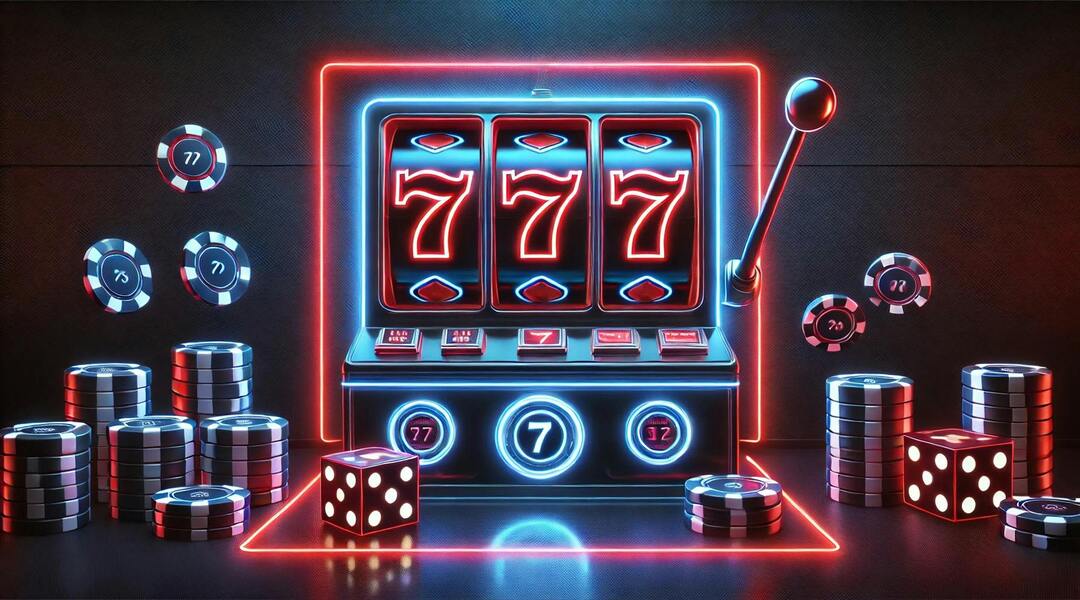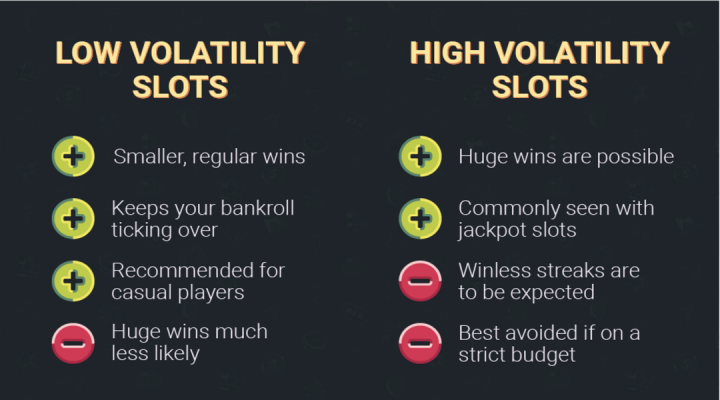Volatility in Gambling: A Comprehensive Review

Volatility plays a critical role in gambling, shaping the player experience and influencing both risk and reward. As an enthusiast or a curious observer, understanding how volatility affects gameplay can empower informed decisions and temper expectations. This review delves into the concept of volatility in gambling, offering an authoritative perspective and analysis while maintaining an objective, journalistic tone.
What Does Volatility Mean in Slots?
Volatility, in the context of casino games, particularly slots, refers to the level of risk associated with a particular game. It is a measure of how frequently and how much a player can expect to win or lose over a defined period. The question of “what does volatility mean in slots” is central to selecting a game that matches a player’s style and risk appetite. Essentially, volatility indicates the variance in payouts: low volatility games tend to offer smaller but more frequent wins, while high volatility slots offer larger rewards less frequently.
Gambling enthusiasts frequently navigate these nuances, evaluating game volatility alongside return-to-player (RTP) percentages, themes, and bonus features. For instance, a high RTP does not guarantee consistent wins; the variance—or volatility—determines the distribution of wins and losses. This interplay of probabilities and payout frequencies informs the overall gaming experience.
The Spectrum of Casino Volatility
Casino games range across a spectrum of volatility levels, affecting the strategies and expectations of players. Lower volatility games like certain table games or particular video poker variations often maintain a more even payout distribution. Conversely, high volatility slots can create dramatic fluctuations in a player’s bankroll, with the potential for significant win periods succeeded by extended losses.
Understanding the statistical implications of volatility is crucial. Mathematics behind these games is rigorously defined, and probability theory plays an inherent role in shaping volatility. For instance, a game with an RTP of 96% might present a wildly different experience depending on whether it is high or low volatility.

Low Volatility Games:
- Frequent smaller wins
- Lower risk of long losing streaks
- Steadier progression in bankroll
High Volatility Games:
- Less frequent but larger wins
- Greater swings in bankroll
- Greater risk but potential for significant payouts
Between these extremes lie medium volatility games that offer a balance of risk and reward. The choice of game volatility aligns with individual preferences: some players seek the adrenaline of chasing substantial jackpots, while others prefer a more gradual accumulation of wins.
Volatility in Gambling – Analyzing the Dynamics
The analysis of volatility in gambling requires not only theoretical understanding but also practical insights based on statistics and player data. For casino operators, designing games with various volatility levels ensures that players of different appetites find something appealing.
Mathematically, volatility is often expressed via standard deviation. A higher standard deviation corresponds to higher volatility, indicating more significant fluctuations between wins. Casinos publicly share RTP and sometimes volatility factors, but the exact calculation details often remain proprietary.
Public data suggests that approximately 20% of popular online slots are classified as high volatility, offering the chance to win jackpots or high-value payouts. For these games, player behavior can be cyclical: periods of frequent small wins followed by extended periods without wins, or vice versa.
The Relationship between RTP and Volatility
Players might wonder about the relationship between Return to Player (RTP) and volatility. While RTP provides an average return over time, volatility is concerned with the distribution of that return. For instance, if a game has a 95% RTP, a high volatility game with this statistic might see several spin attempts without wins until a substantial payout occurs, balancing the overall RTP.
Exploring High Volatility Slots
High volatility slots are notorious for their potential high payouts but require a robust bankroll to withstand the inevitable downswings. These games often feature thematic narratives, engaging bonus rounds, and multipliers that add to the excitement.
- Infrequent Wins: These games may have extended periods without significant rewards.
- Big Payouts: When a win does occur, it often comes with a high payout, sometimes hundreds or thousands of times the initial bet.
- Rapid Swings: The bankroll may experience significant oscillations, leading to a rollercoaster-like experience.
- Engaging Features: Many high volatility slots compensate for long dry spells with immersive themes, bonus rounds, and complex features that maintain player interest.
Below is a table that demonstrates a hypothetical analysis of a high volatility slot over 100,000 spins. The data is illustrative and based on typical player returns and win distributions:
| Feature | Statistic |
|---|---|
| Average RTP | 96.5% |
| Win Frequency | 15% |
| Maximum Payout Ratio | 10,000:1 |
| Standard Deviation | High |
| Bonus Frequency | 5 per 100 spins |
The table underscores how these slots might behave in practice, with high payout ratios and moderate win frequencies typical of high volatility games.
The Positive Aspects of High Volatility Slots

While high volatility slots may not suit every player’s style due to their risk profile, they offer several benefits:
- Excitement and Anticipation: The unpredictable nature of payouts keeps the gaming experience fresh.
- Potential for Big Wins: The possibility of hitting a large payout can be appealing, especially for players looking for high-risk, high-reward scenarios.
- Engaging Themes and Features: These games often come with rich graphics, themes, and innovative bonus features that enhance engagement.
Tips for Managing Bankroll with Volatile Games
- Set a Budget: Always define a maximum amount you’re willing to risk.
- Pace Yourself: High volatility slots may require patience. Don’t chase losses impulsively.
- Choose Games Wisely: Depending on your risk tolerance, select low, medium, or high volatility games.
- Track Your Results: Keep records of wins and losses to understand patterns in your gameplay.
- Take Advantage of Bonuses: Casino bonuses may extend playtime, offering more chances for significant wins.
A common question is how to balance the unpredictability of high volatility games with a long-term gambling strategy. The key lies in setting realistic expectations. While high volatility slots can pay off remarkably, they might also create lengthy downswings. Meanwhile, lower volatility games might not offer dramatic wins but provide consistent, smaller payouts conducive to longer play sessions.
Statistical Insights on Volatility in Gambling
In recent years, various studies analyzed how volatility impacts player satisfaction and casino revenues. Insights include:
- Player Retention: Players who understand and choose games based on volatility tend to have higher satisfaction rates and longer engagement with a given game.
- Market Trends: The trend suggests a growing appetite for high volatility slots among younger demographics, drawn by immersive graphics and potential mega jackpots.
- Risk Tolerance Variability: Demographic data indicates varied risk tolerance across player segments, influencing the popularity of certain games.
Statistical analysis shows that around 65% of experienced players prioritize understanding volatility before committing their bankroll. This careful approach leads to more sustainable gambling and reduced instances of problem gambling behavior.
Journalistic View on Volatility Trends
As a journalist analyzing gambling trends, it’s essential to observe how industry shifts toward high volatility games influence market dynamics. Casino developers are investing heavily in high volatility slots, incorporating advanced algorithms and animations to captivate the modern player. Such investments not only cater to the thrill-seekers but also reflect a broadening of choices that emphasize transparency and fair play.
Moreover, regulatory bodies increasingly emphasize educating players about volatility and variance. This education aligns with the broader mandate to protect consumers and promote responsible gaming practices. Understanding these principles fosters trust and ensures that players make informed decisions, thus sustaining a healthy gambling environment.
Ethical Considerations and Responsible Gambling
Understanding volatility should go hand-in-hand with responsible gambling. While exploring high volatility slots can be thrilling, it’s important to approach them with an awareness of the potential risks. Gamblers should:
- Use self-exclusion features if gambling becomes problematic.
- Set realistic time and financial limits.
- Seek help from support groups or counseling services if needed.
These ethical considerations ensure that the review about volatility remains helpful, informative, and ultimately beneficial to the reader.
Conclusion
In conclusion, volatility in gambling defines much more than the mere frequency or size of wins—it shapes overall strategy, emotional experience, and financial risk. With an objective review of volatility across gaming options, players can align their choices with their risk tolerance and entertainment preferences. Whether it’s answering the question of “what does volatility mean in slots” or exploring the intricacies of “volatility in gambling” through high volatility slots, knowledge empowers informed decision-making.
Embracing volatility not only enhances the gaming experience but also promotes a responsible, educated approach to casino play. By appreciating the statistical elements, market trends, and player psychology, one can navigate the world of high volatility slots with greater confidence and a balanced mindset—ultimately fostering a more sustainable and enjoyable gambling journey.